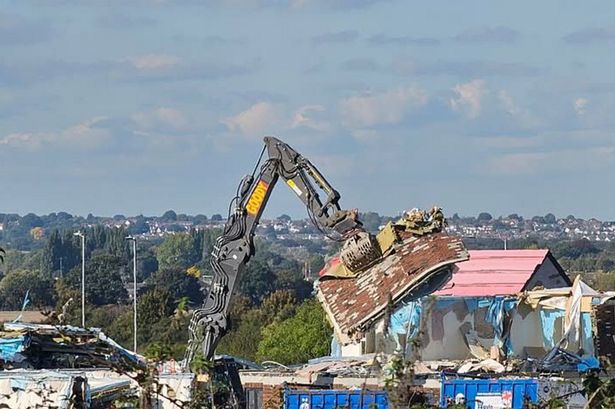The Meadow Grange housing development in Southend-on-Sea, Essex, once envisioned as a vibrant community of 131 new homes, now stands as a stark testament to the unpredictable nature of the construction industry. Instead of bustling streets lined with families settling into their new lives, the site presents a desolate landscape of flattened earth and rubble, the ghostly remnants of partially constructed homes that were recently demolished. What began as a promising project aimed at addressing the pressing need for housing in the area has transformed into a cautionary tale of financial difficulties, planning disputes, and ultimately, the unsettling reality of abandoned aspirations. The story of Meadow Grange unfolds as a complex interplay of factors that highlights the challenges and risks inherent in large-scale development projects.
The initial plans for Meadow Grange promised a mix of housing options, catering to a range of needs and budgets. From starter homes for young families to larger properties for growing households, the development aimed to provide a diverse and inclusive community. The project, undertaken by a private developer, generated significant interest and anticipation within the local community, promising an influx of new residents and a boost to the local economy. However, the early stages of construction were marked by delays and setbacks, hinting at the difficulties that lay ahead. As the project progressed, escalating costs, coupled with unforeseen challenges in securing necessary materials and labor, began to strain the developer’s resources. These initial hiccups would eventually snowball into a series of escalating problems that would ultimately lead to the project’s demise.
The financial strain on the developer became increasingly apparent as construction continued. Reports emerged of unpaid contractors and suppliers, highlighting the escalating financial pressures. The escalating costs of materials, combined with labor shortages and unforeseen site-related issues, created a perfect storm of financial challenges that the developer struggled to navigate. Simultaneously, disagreements with the local planning authority regarding design specifications and compliance with building regulations added further complications. These disputes further delayed the project, adding to the mounting costs and exacerbating the developer’s financial woes. The combination of internal financial pressures and external regulatory hurdles created a seemingly insurmountable obstacle for the project.
The situation reached a critical point when the developer announced that they were unable to continue with the project. Construction ceased, leaving behind a collection of half-finished houses, exposed to the elements and gradually deteriorating. The site became a symbol of unfulfilled promises and a source of frustration for those who had invested in the dream of owning a home in Meadow Grange. The stalled project also raised concerns among local residents about the impact of the abandoned site on property values and the overall aesthetic of the area. The once-promising development had become an eyesore and a constant reminder of a failed venture.
With the developer unable to complete the project, the future of Meadow Grange remained uncertain for a considerable period. Various options were explored, including the possibility of another developer taking over the project. However, the significant costs associated with completing the half-built homes and addressing the outstanding planning issues proved to be a major deterrent. Ultimately, the decision was made to demolish the existing structures, a move that underscores the severity of the situation and the significant financial losses incurred. The demolition marked a definitive end to the initial vision for Meadow Grange and signaled a new chapter for the site.
The demolition of the partially completed homes at Meadow Grange has left many questions unanswered. The reasons behind the developer’s financial difficulties and the extent of the losses incurred remain unclear. The incident serves as a stark reminder of the risks inherent in large-scale development projects and the importance of thorough planning and financial management. The future of the site remains uncertain, with discussions ongoing regarding its potential use. Whether it will eventually be redeveloped for housing or repurposed for another purpose remains to be seen. The saga of Meadow Grange stands as a complex case study in the challenges of urban development and the potential consequences of unforeseen circumstances. It also highlights the need for greater transparency and accountability within the construction industry to prevent similar situations from occurring in the future.














